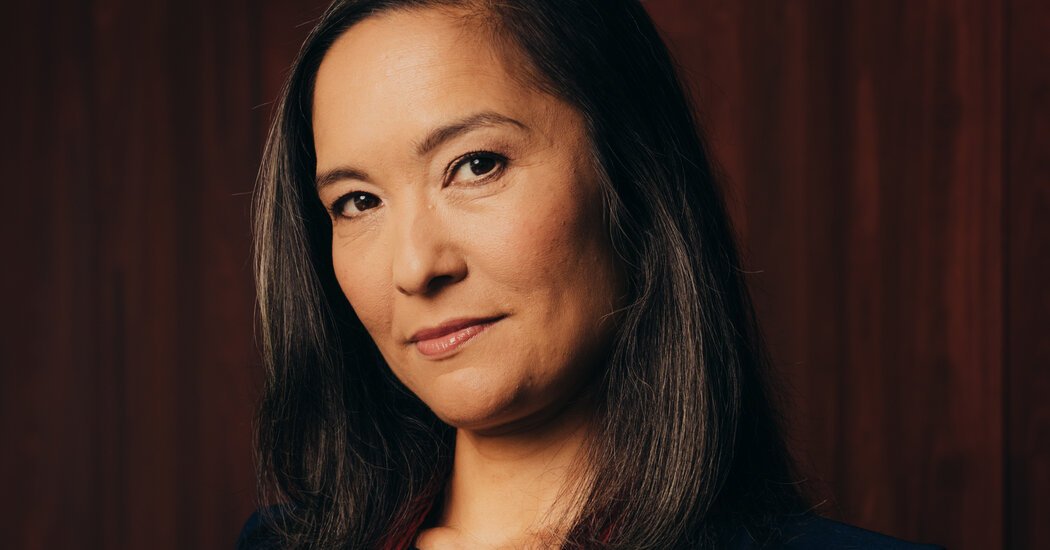Mariko Silver, a prominent leader in education, government and the nonprofit sphere, will serve as the next president and chief executive of Lincoln Center, the organization announced on Wednesday.
Silver, who previously led Bennington College in Vermont and leads the Henry Luce Foundation in New York, will succeed Henry Timms, who left last month after five years in the job.
She will take the reins of Lincoln Center as it works to broaden its audience, navigate an uncertain economy and push through an ambitious plan to tear down the barriers between the center and the surrounding neighborhood. She will also help shape its programming; the center has recently shifted away from classical music in favor of genres like pop, hip-hop, social dance and comedy.
“Lincoln Center is the beating heart of New York City,” Silver said in an interview. “I’m incredibly excited to get going and do the work of bringing more beauty, more joy, more art and more human feeling into the world.”
The appointment is a milestone for Lincoln Center: Silver, 46, whose father is Jewish and mother is Japanese American, will be the first woman of color to serve as president and chief executive. It is also a homecoming of sorts: Silver grew up a few blocks from the center and studied dance and theater as a child.
Steven R. Swartz, the president and chief executive of Hearst, who serves as chair of Lincoln Center’s board, said the organization was impressed by Silver’s record as a nonprofit executive. At Bennington, where she was president from 2013 to 2019, she oversaw the largest capital campaign in the school’s history, raising more than $90 million. She also serves as chair of the Massachusetts Museum of Contemporary Art’s board and was an official at the Department of Homeland Security in the Obama administration.
“There is a dynamism there,” Swartz said. “There’s a charisma. There’s an energy level that I thought really reflects where we are at Lincoln Center today.”
Silver will have to navigate Lincoln Center’s delicate relationship with its constituent organizations, including the Metropolitan Opera, the New York City Ballet and the New York Philharmonic. The center acts as landlord to those groups but has little power over them, since each has its own leadership, board and budget. The center also presents its own work, sometimes in competition with its constituents.
Deborah Borda, a former president and chief executive at the Philharmonic, who worked with Timms to complete a long-stalled $550 million renovation of David Geffen Hall, said Silver was a “dynamic, likable” force. The two got to know each other at Bennington, where Borda serves on the board.
“She’s a gifted collaborator,” Borda said. “When the president of Lincoln Center works well with the constituents, that makes a real difference.”
Silver will be tasked with leading a costly renovation of Lincoln Center’s western side, breaking down the boundaries that separate the campus from Amsterdam Avenue. The project began under Timms and remains in its early phases.
Darren Walker, president of the Ford Foundation and a member of Lincoln Center’s board, said that Silver was a “wicked smart and deeply empathetic” leader who was well suited for the job. But he also said the center would face challenges, including raising money in an uncertain economy.
“Lincoln Center sits at the intersection of the arts, philanthropy, economics and politics,” he said. “It will take a shrewd and savvy leader to navigate that context in the coming years.”
After a turbulent period, including years of financial woes and leadership churn followed by the pandemic, Lincoln Center is on more stable ground.
The organization’s identity and offerings have changed substantially over the past decade. The old Lincoln Center Festival was scrapped a few years before Timms arrived, and with it the ambitious productions it brought each summer from around the world, including Noh theater and Kabuki theater from Japan, Indonesian dance and Chinese opera.
The Mostly Mozart Festival was replaced with a more eclectic festival, Summer for the City, during which the center hangs a giant disco ball over its main plaza.
Some critics have suggested that the center has gone too far, abandoning its traditional role as a champion of classic art forms.
Silver said programming choices should not be framed as classical versus other genres.
“A binary has been drawn that I just don’t subscribe to,” she said. “I love the celebration of 50 years of hip-hop as much as I love ‘The Magic Flute.’”
Silver’s mother is Joan Shigekawa, a television producer and a former official at the National Endowment for the Arts. Her father was Tony Silver, whose 1983 documentary, “Style Wars,” was one of the earliest accounts of hip-hop culture.
Silver recalled that as a teenager in 1996, she flew from Los Angeles, where she finished high school, to New York, to catch the mezzo-soprano Cecilia Bartoli in Mozart’s “Così Fan Tutte” at the Met Opera.
Silver said that she wanted more people to experience Lincoln Center’s offerings.
“The opportunity of stepping onto the Lincoln Center campus,” she said, “should be something that’s available to everyone.”
Read More: Lincoln Center Taps Education Leader as Next President


